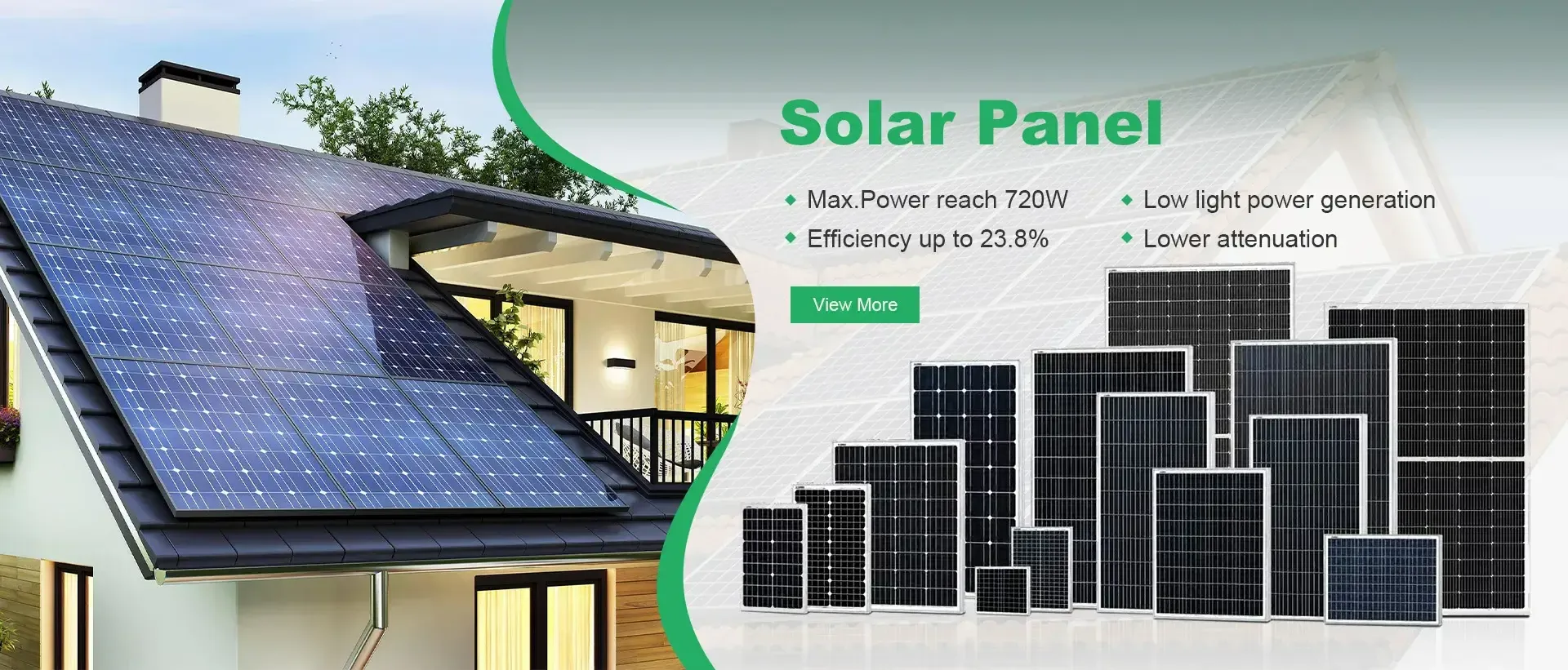Guide to Efficient Solar Panel Installation for Your Home
The Benefits and Process of Solar Panel Installation
As the world continues to grapple with the challenge of climate change and the pressing need for sustainable energy solutions, solar power has emerged as a leading alternative. The installation of solar panels is not just about reducing electricity bills; it's also about contributing to a greener planet. This article will explore the many benefits of solar panel installation, the installation process, and what homeowners should consider before making the switch to solar energy.
Benefits of Solar Panel Installation
1. Reduction in Energy Bills One of the most immediate benefits of installing solar panels is the significant reduction in electricity costs. By harnessing the sun’s energy, homeowners can generate their own electricity, which reduces reliance on the grid. In many cases, solar panel systems can even produce excess energy, allowing homeowners to sell it back to the grid, further offsetting costs.
2. Environmental Impact Solar energy is a clean and renewable resource. Unlike fossil fuels, which release harmful greenhouse gases into the atmosphere, solar panels produce energy without emitting pollutants. By reducing dependency on nonrenewable energy sources, solar panel installation helps to mitigate climate change and protect the environment.
3. Increased Property Value Homes equipped with solar panel systems often see an increase in property value. As buyers become more environmentally conscious and energy-efficient homes are in higher demand, a solar panel system can be an attractive feature that enhances the overall marketability of a property.
4. Government Incentives Many governments offer incentives for solar panel installation, such as tax credits, rebates, and grants. These financial incentives can significantly reduce the initial costs associated with installation, making solar energy more accessible for homeowners.
5. Energy Independence By investing in solar energy, homeowners can gain a degree of energy independence. With the rising costs of electricity and the unpredictability of energy markets, having a solar power system provides a buffer against fluctuating energy prices.
The Installation Process
Installing solar panels typically involves several key steps
1. Assessment and Consultation The journey begins with an assessment of the property to determine its solar potential. Energy consultants analyze factors such as roof orientation, shading, and local climate conditions. This stage often includes a consultation where homeowners can discuss their energy needs and financial goals.
solar panel installation

2. Design and Planning After the initial assessment, a solar system design is created. This involves selecting the type and number of panels required, as well as planning the layout to optimize energy production. Engineers ensure that the system complies with local zoning laws and building codes.
3. Permitting Before installation can begin, necessary permits must be obtained from local authorities. This can involve additional inspections and approvals, which vary depending on the region.
4. Installation The actual installation involves mounting the solar panels on the roof or in a ground-mounted system. Qualified technicians ensure that all components, including inverters and batteries (if applicable), are properly installed to maximize energy efficiency and safety.
5. Connection to the Grid Once the system is installed, it must be connected to the grid. This step typically involves inspections by local utility companies to ensure the system meets their standards. Homeowners may need to sign a net metering agreement, allowing them to receive credits for any excess energy produced.
6. Monitoring and Maintenance After installation, homeowners can monitor their solar power system's performance using apps or monitoring tools. While solar panels generally require minimal maintenance, occasional cleaning and inspections ensure optimal performance and longevity.
Considerations Before Installation
Before deciding to install solar panels, it’s essential for homeowners to consider several factors
- Initial Investment While solar panels can lead to long-term savings, the up-front costs can be significant. Homeowners should evaluate their budget and consider financing options.
- Location and Sunlight Exposure The effectiveness of solar panels depends greatly on geographical location and the amount of sunlight received. Areas with frequent cloud cover may not yield the same benefits as sunnier regions.
- Roof Condition The condition of the roof is critical. If a roof needs repair or replacement, it’s wise to address this before installing solar panels.
In conclusion, solar panel installation presents a myriad of benefits, from economic savings to environmental advantages. While the process may require careful consideration and investment, the long-term rewards make solar power an appealing option for homeowners looking to embrace sustainable energy. As technology advances and the global push for renewable energy continues, solar panels are poised to play a vital role in shaping our energy future.
-
Understanding the Advantages of Solar String Inverters for Your Energy SystemNewsApr.29,2025
-
Choosing the Right PV Inverter: A Comprehensive GuideNewsApr.29,2025
-
The Future of Solar Power: Exploring Bifacial Solar PanelsNewsApr.29,2025
-
The Complete Guide to Solar Panels: Efficiency, Cost, And InstallationNewsApr.29,2025
-
The Best Options for Efficiency and Cost-EffectivenessNewsApr.29,2025
-
Harnessing the Power of Off-Grid Solar Inverters for Energy IndependenceNewsApr.29,2025







